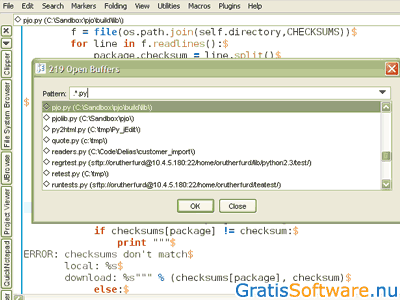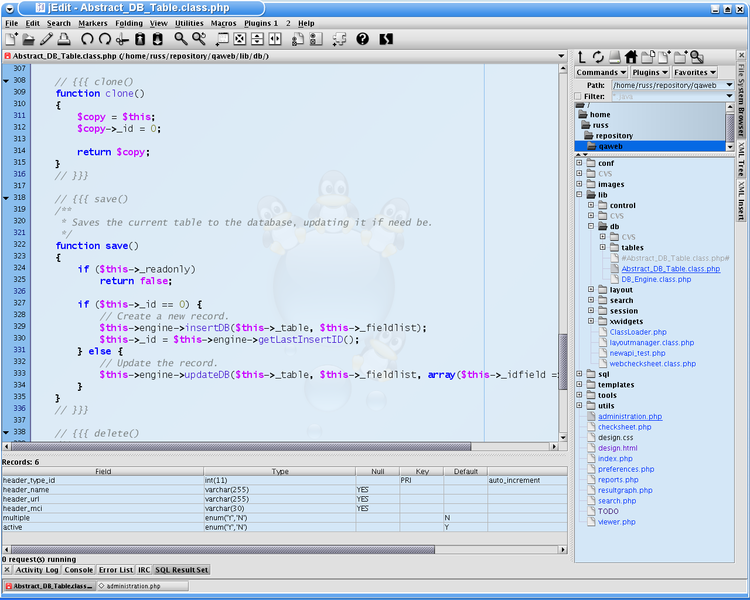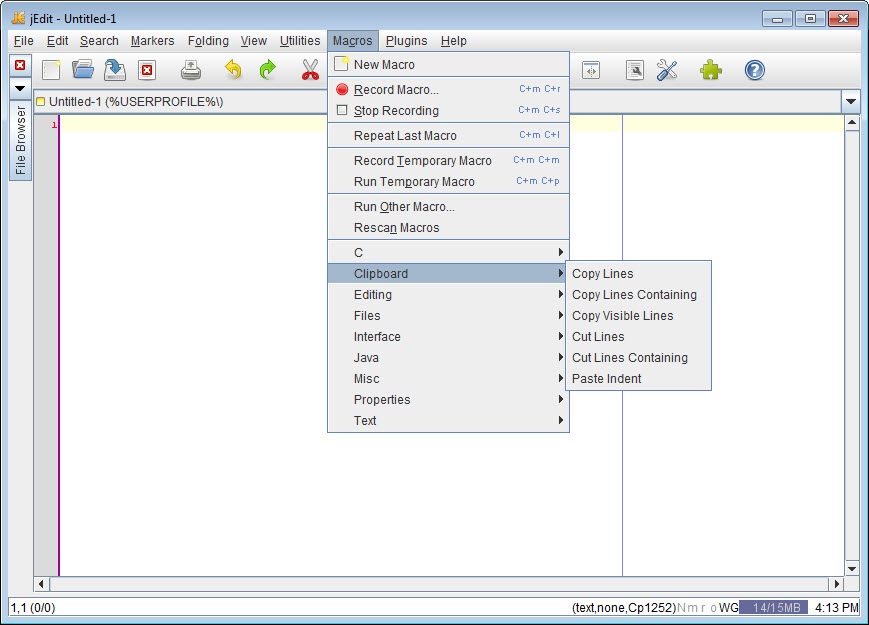
Many of such text editors were originally developed with programming in mind, and contains a number of features that will make programming easier, such as syntax-highlighting that will show various part of the program being developed in different colors.
#Jedit download mac install#
(Wikipedia has a very long description of the newline issue here: newline).Ī large number of good plain text editors exists for various Operating Systems - for example NEdit for UNIX type systems, BB Edit for the Mac and UltraEdit for Windows - some editors exists for multiple platforms like the jEdit program we'll install and test in a moment. Until the appearance of Windows 10, the most commonly used Plain Text editor in Windows ("Notepad") could NOT handle this issue. Unfortunately three standards exist for this:Īny good text editor worth its salt can handle all three standards transparently. This is done by appending an invisible (value 0-31) " newline" character by the end of each line. Since a text file is basically just a long string of values between 0-255, a special symbol must be reserved to split the text into individual line. While it might be tempting to name your sequence " Æsel_Insulin" or " ØrneDNA" there is no guarantee that it will work in all programs.Ī second issue is that of Line Endings ("newlines"). You don't have to know the details of the various character encodings to do bioinformatics, but one short bit of advice is needed: When creating sequence files and other files used as input for bioinformatics programs, always stick to the English letters.

#Jedit download mac mac os#
in Mac OS X), an implementation of the UNICODE standard known as UTF-8 encoding is used - this uses two or more bytes for each non-ASCII character and can thus represent a much wider range of languages including Thai and Chinese. Unfortunately, there are many different encodings for the range 128-255 depending on both country and operating system - the most common one is known as Windows-1252 or codepage 1252. Since ASCII is an American standard, national characters like "æ", "ø" and "å" are NOT represented in the table - some of these characters are found in the range 128-255. Notice that the values 0-31 are reserved for special purpose "letters" that have no visual representation (more on this later): If we wanted lower-case it would be 100, 110, 97. As can be seen from the table the text "DNA" would be represented by the three numbers: 68, 78, 65. Normally a derivative of ASCII encoding is used - see the table below. How each numerical value is interpreted can potentially be different, and this is known as encoding. In the most widely used type of text files ("old school" text) each letter is represented by one byte (8 bits) = 256 possible symbols.


For example:ĪTGCTGACCGACTCTGACAAGAAGCTGGTCCTGCAGGTGTGGGAGAAGGTGATCCGCCACCCAGACTGTG In bioinformatics it's very common to have the data hosted in simple plain text format. 4.2 Search and Replace & Block selection.4.1 On file extensions and default programs.2.2 Different interpretations of "plain text".

2 How difficult can it be? Text is text, right?.1 Background: data in plain text format.


 0 kommentar(er)
0 kommentar(er)
